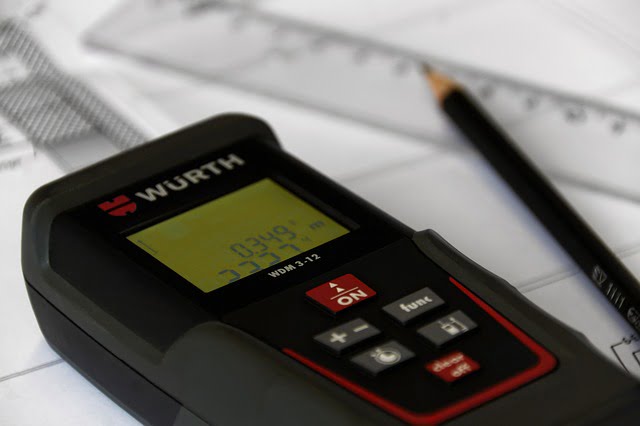When talking about how laser measure works, the first thing that you have to learn is the laser itself. This is the physics artificial phenomenon that takes a big chunk of the portion on how the laser measure works. Other aspects to know are some basic math and light speed coefficient.
As the laser measures on market are relatively expensive, meanwhile it has many advantages, learning the working principle of laser measure may teach you how to make its DIY version.
Laser and Its Reflection
Laser, which stands for light amplification by stimulated emission of radiation, is the monochromatic light generated by a collision of a photon to an electron. In the final process, the wave/light is focused and it can travel to a longer distance. Most laser measuring tool products on the market emit red light; that means the wavelength is about 620 to 750 nm.
If you want to learn more about lasers, you can watch the following video from PhysicsHigh.
After the monochromatic laser is emitted, it radiates through space, hits the target, and reflects. The reflections spread all over to any direction. But some of them get back to the device (sensor). The device then measures the distance with the help of this reflection.
You can watch this video to see that some of its reflections go to your eyes (thus the red laser dot is seen by your eyes). It happens in the minutes 5:58.
At a certain condition where the target distance is significantly far away, the reflection cannot be easily detected. The greater the distance, the weaker the reflection. Sunlight can also affect. Thus, outdoor measurement using laser measure requires a stronger laser. Another option is to use an additional reflection target to reflect the light better.
When buying a laser measure, keep in mind that some laser measure models can measure a non-reflecting surface without a reflecting target, while some laser measures cannot (requires reflecting target).
Distance Formula
To measure the distance, you need to do some math. You could do this formula or let your device do itself using the processor inside.
Distance = (total time travel until it gets back x light speed) : 2
The first thing that your laser measure does is sensing how long the laser travels from its first take-off to its return. After that, that time is multiplied by light speed (let’s say 300000 km/s) to get the total distance of travel. Finally, that total distance is divided by two to get the distance between your laser measure and the target.
All of this calculation happens in the processor.
After getting this distance, you can measure other distances if you want to calculate area, volume, and angle.

Summary
How the laser measure works is a fun thing to know. The basic things you have to know are the laser and some math.
The device will emit the laser to the surface target. Then, the device measures the time that the laser takes from its first release until its turnback. This time then is divided by two. The divided time multiplied by light speed is the final answer of the distance between the device and target.
Further, this distance reading can be multiplied with other distances to get the calculations of area and volume. Another measurement such as angle measurement can be obtained as well.
Make sure that the surface doesn’t have bright sunlight because the sunlight can have a negative impact on the calculations. If you are an appraiser that measures outdoor, you should consider this factor.
When learning about laser but you struggle to notice the red color, we are sorry, a color correction glasses could help you.

